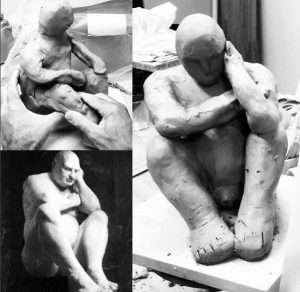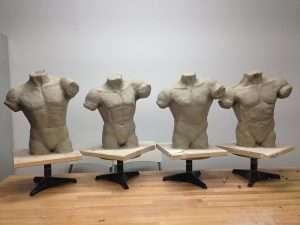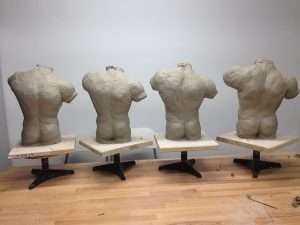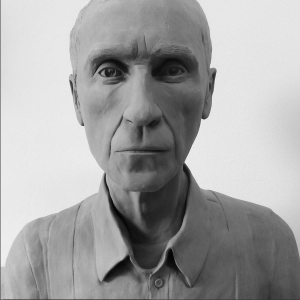Figurative sculpture and the human form have always been present as artistic expression; from prehistoric cave paintings through the classical perfection of ancient Greece, up to current contemporary representations.
I’m an artist without any formal training and I enjoy creating abstract works such as masks or small sculptures based on the human form. However I have always struggled to recreate realistic human forms in my artwork. I signed up for the Figurative Sculpture class at the 137° Artistic Studio in Poblenou with the desire to gain knowledge and insights about human anatomy and how to effectively transfer that knowledge onto the clay.
Learning how to sculpt the human form
I attended the course for one academic year and gained far more knowledge than I had anticipated, including historical context and observation training. We were four students in the class with different backgrounds and experience levels. We each received lots of personalized attention and feedback from our talented instructor, Dalia Sofronie.
Dalia has over 7 years of experience teaching hand-building and sculpture courses in Barcelona. Her dedication for the craft comes through in her teaching. She encourages her students to take their artwork seriously, push their limits and get outside of their comfort zone.
Class assignments
On the very first day Dalia asked us to build a complete sculpture during the class. We had just over two hours to complete the assignment. Working off of a single printed image and recreating a precious work of art in just two hours was intimidating, but proved to be an exceptional exercise. Besides all of the laughter and fun we had during the class, this lesson served as a confidence-building exercise. I was happy with how my piece turned out, something I never thought was possible in such a short period of time.
 |
 |
Figurative sculptures made by students on the first day of class.
Our next assignment was to recreate a male bust as close as possible to the original sculpture. During the course of the lesson, Dalia made her example sculpture and she always stayed one step ahead of us. This way, at the beginning of each class we could observe her progress and know how much she expected us to accomplish that day. In this exercise I learned about the peculiarities of the male form (the female form comes much more naturally to me) as well as intense observation training and clay handling techniques.
 |
 |
Figurative sculptures of a male bust in progress.
Next we worked on portraits and facial expressions, including differences between male and female traits, different ages, etc. This knowledge was very useful for our next sculpture working with live models—each other! We each created a bust of our partner, with lots of laughs and bewildered looks going back and forth.

@ameliaj.creations working on a sculpture |

Sculpture in process by Tonje Svenson Paus @tonjesvensonpaus |
To wrap up the course we were asked to come up with our own design concept within a context from prehistory. This was a time when fertility was a prominent theme and voluptuous figures showed off a person’s sexual anatomy. Storytelling was also an important aspect of artwork. Therefore each piece needed to communicate a message to its viewers. This was by far my favorite assignment because it allowed us to use what we had learned in the class thus far and be creative at the same time.
I highly recommend the artistic ceramics courses offered by Dalia and her team at the 137° Artistic Studio. It’s a great way to learn new skills and have a lot of fun!
If you’re interested in receiving more information about the classes at 137° Artistic Studio, please fill out the form below.



Thanks for your interest in art & creativity on FrikiFish— a one-woman labor of love, providing free content and services to artists, art-lovers and creative projects in-and-around Barcelona. This project runs on caffeine and community love, please consider supporting with a donation or a cup of coffee. Thank you!